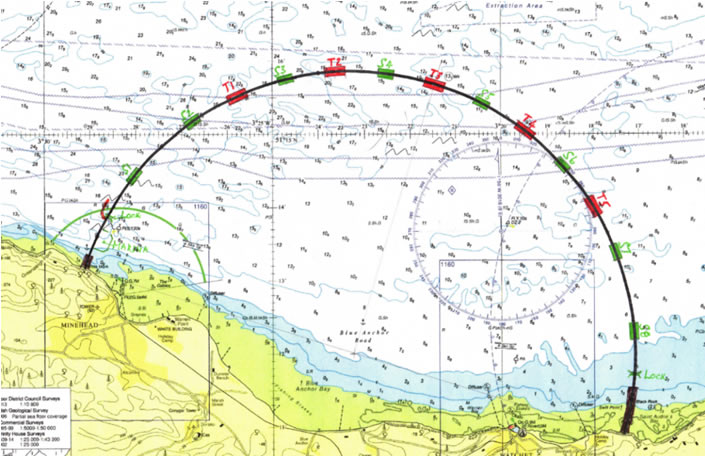Engineering Design and Construction
The lagoon enclosure will be formed from large reinforced concrete caissons, prefabricated in existing port facilities in the Bristol Channel and towed to site, and short lengths of embankment in the shallow water near the landfalls. The use of caissons is proven technology from offshore oil and gas and it minimises offshore construction with the attendant risk of weather delays and possible storm damage to part built embankments. The proposed layout includes 125 bulb turbines of 7.2m diameter and capacity 20MW, thus providing a total generating capacity of 2500MW, and 160 sluiceways with vertical lift gates. Both turbines and sluice gates will be housed in concrete caissons.

The proposed layout is shown above superimposed on the Admiralty chart of the area. The locations of turbines and sluices have been spaced out around the lagoon perimeter to provide well dispersed water flows in both generating and sluice modes of operation with the intention of minimising silt build up within the lagoon, minimising tidal level change during construction, and encouraging safe fish movement.
Electrical equipment will be installed in the powerhouse caissons. Power transmission cables will be routed in cable tunnels along the perimeter of the lagoon to the East landfall. On land there will be a sub-station to transform from 132kV to 400kV for onward transmission to the National Grid.
National Grid (NG) have advised that the electrical grid in the South West is being upgraded to accommodate Hinkley Point C power station. There will be a new sub-station at Sherton which is expected to have spare capacity of 4000MW and, based on present knowledge, the WSL output can be connected at Sherton.
There are communications cables on the seabed crossing the proposed lagoon. The cables will need to be sleeved where they run under the caissons. This is established technology.